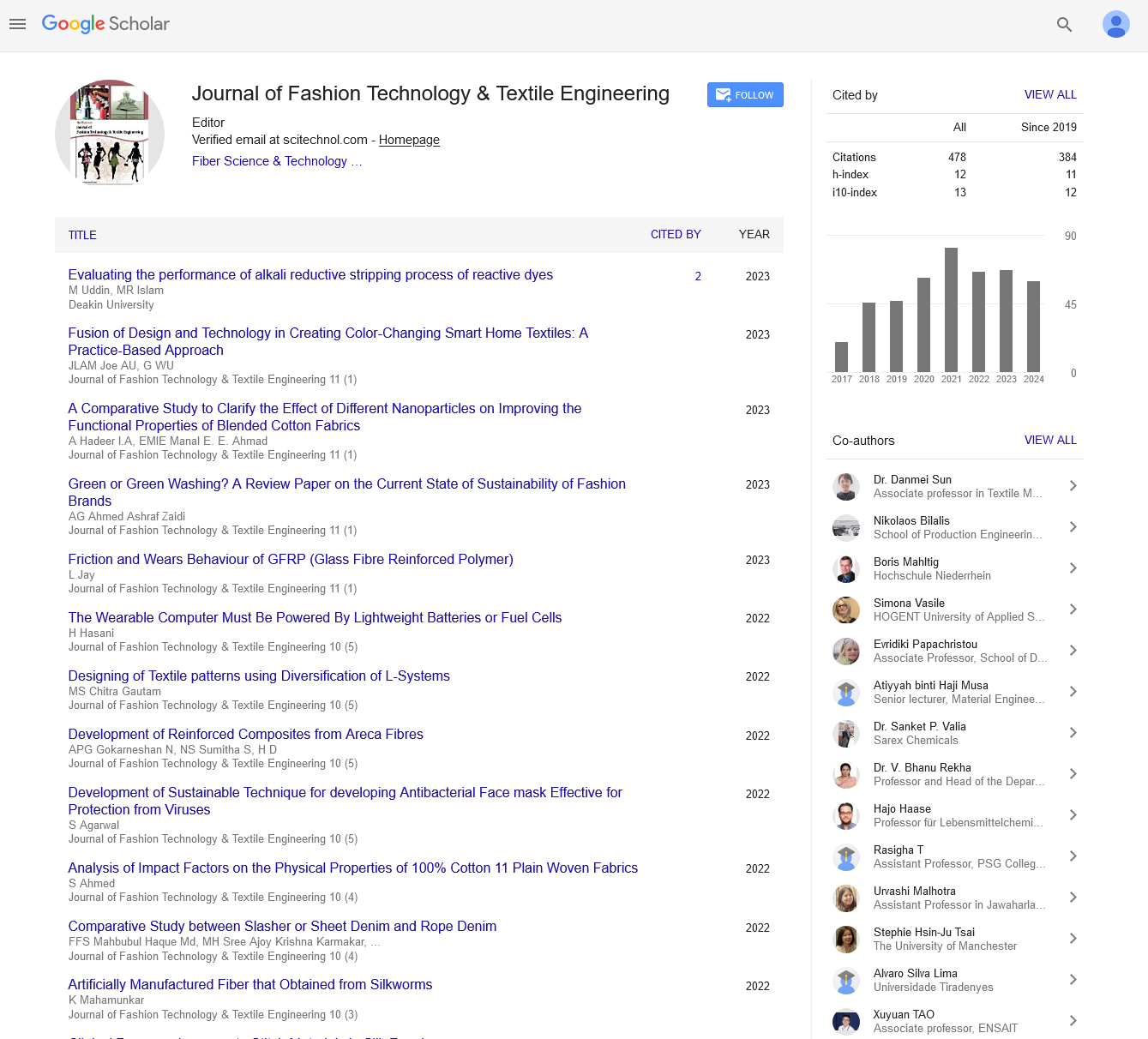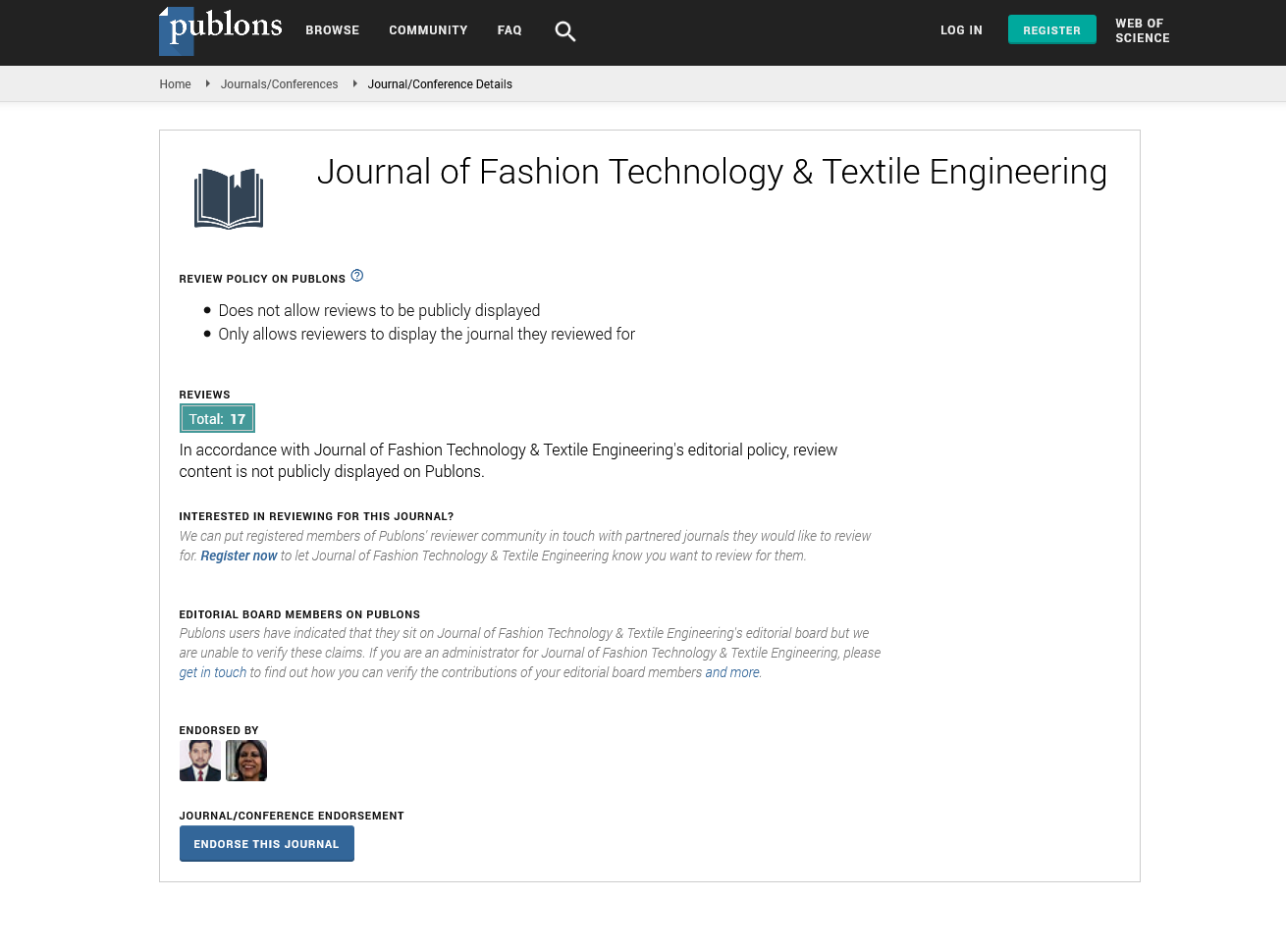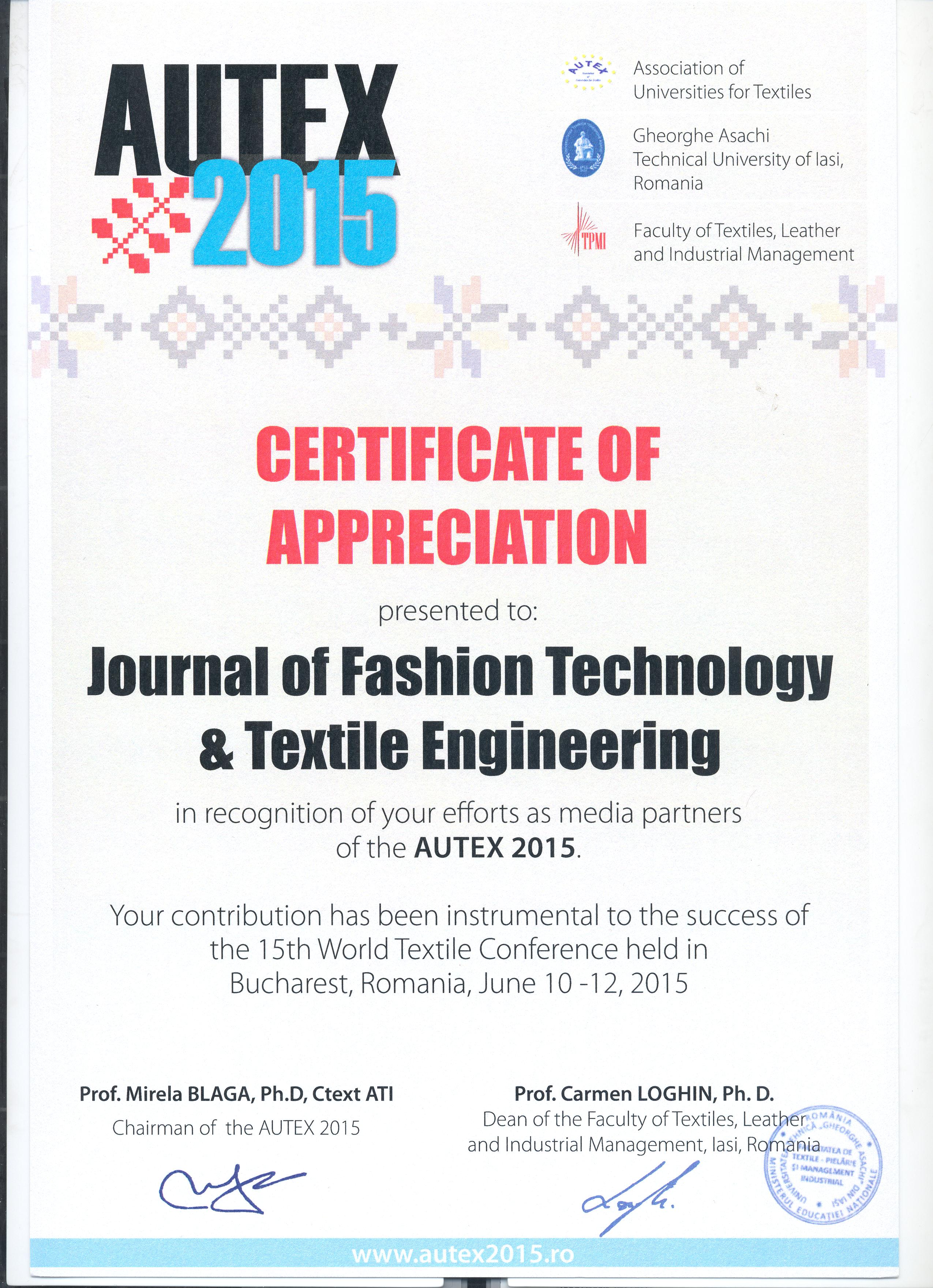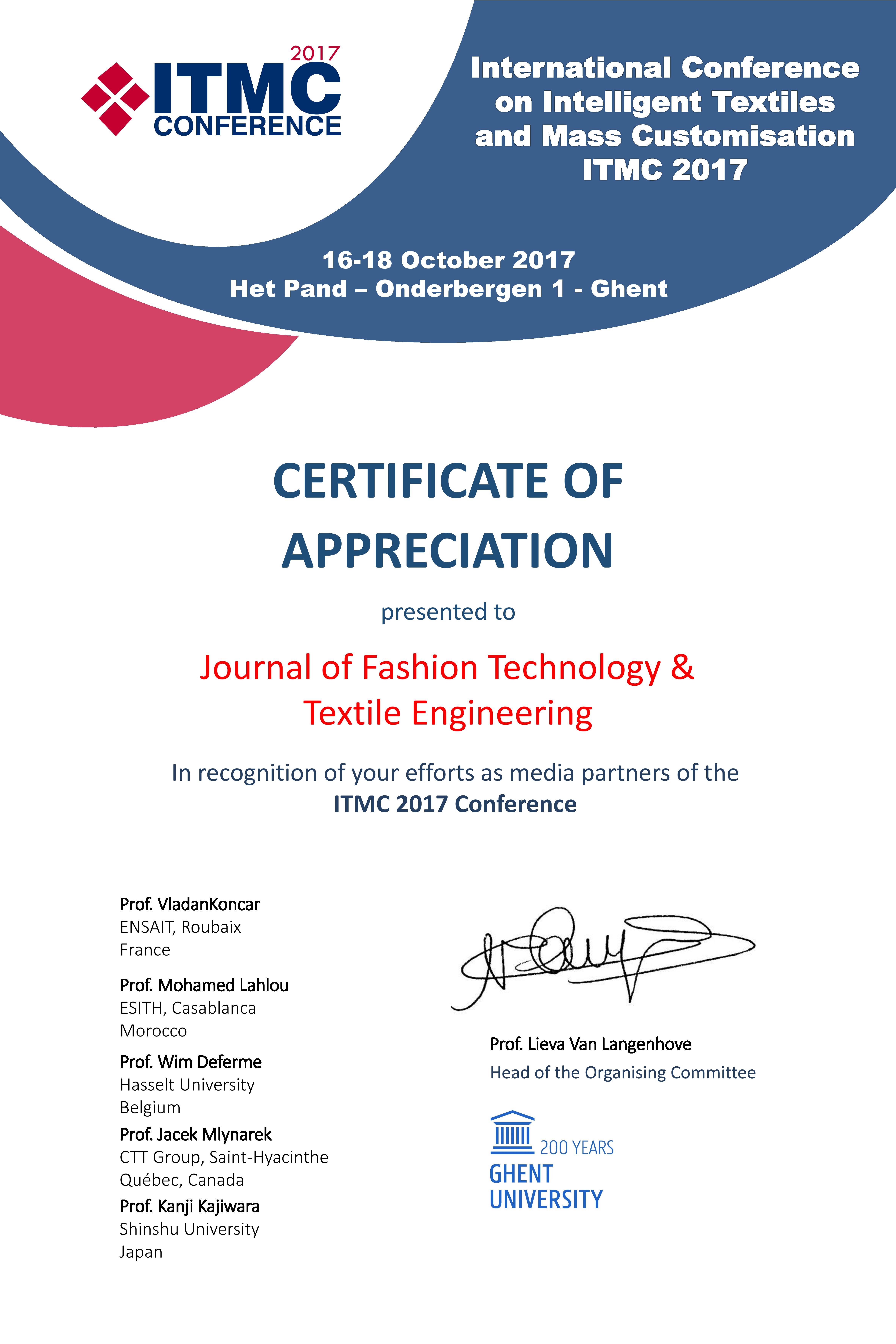Commentary, J Fashion Technol Textile Vol: 12 Issue: 5
Circular Economy Models in Fashion: Textile Recycling and Upcycling Processes
Fatima Al Mansoori*
1Department of Textile and Fashion Design, University of Sharjah, Sharjah, UAE
*Corresponding Author: Fatima Al Mansoori,
Department of Textile and Fashion
Design, University of Sharjah, Sharjah, UAE
E-mail: fatimaal_mansoori@gmail.com
Received date: 23 September, 2024, Manuscript No. JFTTE-24-152100;
Editor assigned date: 25 September, 2024, PreQC No. JFTTE-24-152100 (PQ);
Reviewed date: 09 October, 2024, QC No. JFTTE-24-152100;
Revised date: 17 October, 2024, Manuscript No. JFTTE-24-152100 (R);
Published date: 25 October, 2024, DOI: 10.4172/2329-9568.1000378.
Citation: Mansoori FA (2024) Circular Economy Models in Fashion: Textile Recycling and Upcycling Processes. J Fashion Technol Textile 12:5.
Description
The fashion industry has observed a steady change towards sustainability through circular economy models. These models prioritize the continuous use of materials, turning discarded textiles into new products or reusing them in ways that minimize waste. In this textile recycling and upcycling have emerged as key methods to help transform the traditional, linear fashion economy. Textile recycling focuses on converting old clothes and fabrics into new materials. This process prevents used garments from ending up in landfills and instead gives them a new purpose. Recycling textiles typically begins with sorting the materials by type, quality and color. Fabrics made from natural fibers like cotton and wool often undergo a different treatment compared to synthetic ones, as each type requires specific handling to produce useful recycled fibers.
Mechanical recycling is the most widely used technique for natural fibers. This method shreds textiles into fibers that can be rolled into new yarn. However, the fibers often lose strength during shredding which requires the addition of virgin fibers to produce durable fabrics. Chemical recycling provides a more advanced alternative, especially for synthetic materials like polyester and nylon. This technique breaks down synthetic textiles into their original polymers, allowing them to be reprocessed into fibers without significant quality loss. While chemical recycling is promising for managing synthetic waste, it is still in its early stages of widespread adoption due to cost constraints.
Both types of recycling present challenges, including sorting complexities and energy-intensive processes. Advances in technology continue to simplify these methods, making textile recycling more efficient and viable. For instance, companies are increasingly using automated sorting systems to separate fabrics more precisely, which enhances the recycling process. Upcycling in fashion goes beyond only recycling fabrics. It involves transforming discarded garments or materials into products with a higher or equal value, often improving their appeal by adding unique designs and elements. Upcycling minimizes resource consumption by reducing the need for new materials, making it one of the most innovative ways to explain textile waste.
Upcycling processes are often used in small, artisan workshops where designers incorporate old clothing into their collections. By using the original structure of garments, such as reworking denim into patchwork jackets or old scarves into skirts, upcycling adds an element of exclusivity. These practices have gained popularity among consumers who appreciate the uniqueness of upcycled products and the craftsmanship involved. One successful example of upcycling in fashion is the trend of reimagining vintage clothing. Many brands are now specializing in sourcing vintage garments and updating them for contemporary audiences.
Both textile recycling and upcycling support a more sustainable fashion industry by reducing waste, conserving resources and minimizing environmental impact. They help reduce dependence on virgin resources, lowering water consumption, energy usage and greenhouse gas emissions. Additionally, these practices encourage brands to operate more responsibly, inspiring others in the industry to adopt similar models. On the social front, the growth of textile recycling and upcycling produces employment opportunities within the fashion sector, particularly for artisans and smaller businesses. As more brands explore circular models, demand for skilled workers in recycling and upcycling will likely grow, supporting jobs that emphasize sustainable practices.
Recycling technology for textiles, especially blends, is still developing. Many garments contain mixed fibers that are difficult to separate, limiting the potential for recycling. Upcycling, on the other hand, often requires skilled labor and tends to be more time-intensive. The result is usually a higher price point for upcycled items, which can restrict their accessibility for some consumers.
Conclusion
Innovation will play a role in undertaking these challenges. Research into new recycling technologies and upcycling methods could improve efficiency and reduce costs, making these processes more accessible on a larger scale. Industry collaborations and investments in infrastructure are also essential to promote wider adoption of circular models. In summary, textile recycling and upcycling are reshaping fashion with eco-friendly approaches that extend the span of materials. These processes contribute to a model that not only reduces waste but also encourages innovation and originality. As they progress, they represent a sustainable path forward for fashion, showing how the industry can operate within an economy where materials are continuously repurposed and revalued.
 Spanish
Spanish  Chinese
Chinese  Russian
Russian  German
German  French
French  Japanese
Japanese  Portuguese
Portuguese  Hindi
Hindi 


